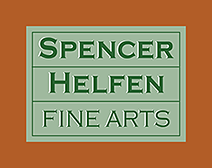
In War the Fathers Bury Their Sons (Reverse) 1937
1881-1956
Theme/Style – Allegorical, Mythological, Figurative art
Media – Bronze and marble sculptures, medals, coins
Artistic Focus – Chester Beach’s stature as an academic sculptor of the figure is undisputed. But his work, characterized by one critic as “pure idealism united to a brilliant technique,” also possesses a subtlety and cleverness that reveal him as an imaginative and extremely insightful artist, whose sculptures transcend traditional representation and communicate to the observer both deep emotion and the presence of a vital, human spirit.
Career Highlights –
- Chester Beach was born in San Francisco, California, in 1881, where he studied at the California School of Mechanical Arts and the Mark Hopkins Institute of Art.
- From 1903 to 1906, Beach studied in Paris at the École des Beaux-Arts and the Académie Julian under Raoul Verlet, exhibiting at the Académie in 1905 and winning the gold medal.
- Returning to the U.S. in 1907, Beach settled in New York City, where he was to maintain his studio and residence at 207 East Seventeenth Street for 45 years.
- Beach exhibited at the National Academy of Design in 1907, winning the Barnett Prize for sculpture, and continued to exhibit there into the 1930s, winning its medal for sculpture in 1932 for his piece entitled Crying.
- Beach exhibited 10 bronzes in a group show at the Macbeth Galleries in New York in 1908, and was also included in exhibitions at New York’s National Arts Club and at the National Sculpture Society in Baltimore that same year.
- From 1910 to 1922 Beach was a teacher of sculpture at New York’s Richmond Hill Settlement House for immigrants, and in 1934 he taught drawing at the city’s Beaux-Arts Institute of Design.
- At the groundbreaking 1913 Armory Show in New York, Beach exhibited his The Unveiling of Dawn, now in the collection of the Metropolitan Museum of Art; and in 1914 he had a solo exhibition at New York’s Macbeth Galleries.
- Beach returned to San Francisco to execute sculptures for the Panama-Pacific International Exposition of 1915, winning a silver medal for his three large statuary groups in the Court of Abundance entitled The Stone Age, The Medieval Age, and The Ages of the Future.
- In 1923 Chester Beach’s design was selected for the 50-cent-piece commemorating the Monroe Doctrine Centennial Exhibition in Los Angeles that year, and also won the prize of the American Numismatic Society in 1919 for his medal commemorating the Peace Treaty of Versailles. Beach designed several other medals, and in 1946 was given the Society’s Saltus Medal for distinguished medallic work.
- In 1918 Beach was elected to the American Academy of Arts and Letters, and he became an academician of the National Academy of Design in 1924. He exhibited at the Architectural League of New York in 1924 and the Art Institute of Chicago in 1925, receiving gold medals in both exhibitions, and in 1927 was president of the National Sculpture Society.
- Beach exhibited at the California Palace of the Legion of Honor in 1929, as well as in a show at the Grace Nicholson Galleries in Pasadena comprising work by artist members of the Grand Central Galleries in New York.
- Beach exhibited at the National Sculpture Society in 1938, and at the New York World’s Fair in 1939 with his fountain Riders of the Elements. In 1945, Beach was included in the show “Portraits of Americans by Americans” at the New York Historical Society.
- A few of Beach’s best known public sculptural works in New York are a bust of Adolph Lewisohn at City College, and statues at Barnard College and the former American Telephone & Telegraph Building at 195 Broadway. Beach’s four bronzes, Twelve Signs of the Zodiac, The Fountain of the Waters, Sun Drawing the Waters, and Earth Receiving the Waters, are on the grounds of the Cleveland Museum of Art in Ohio. Beach’s last completed work, executed in 1955, was a plaque of Benjamin F. Fairless, former president of the United States Steel Corporation.
- Chester Beach passed away in Brewster, New York, in 1956.







